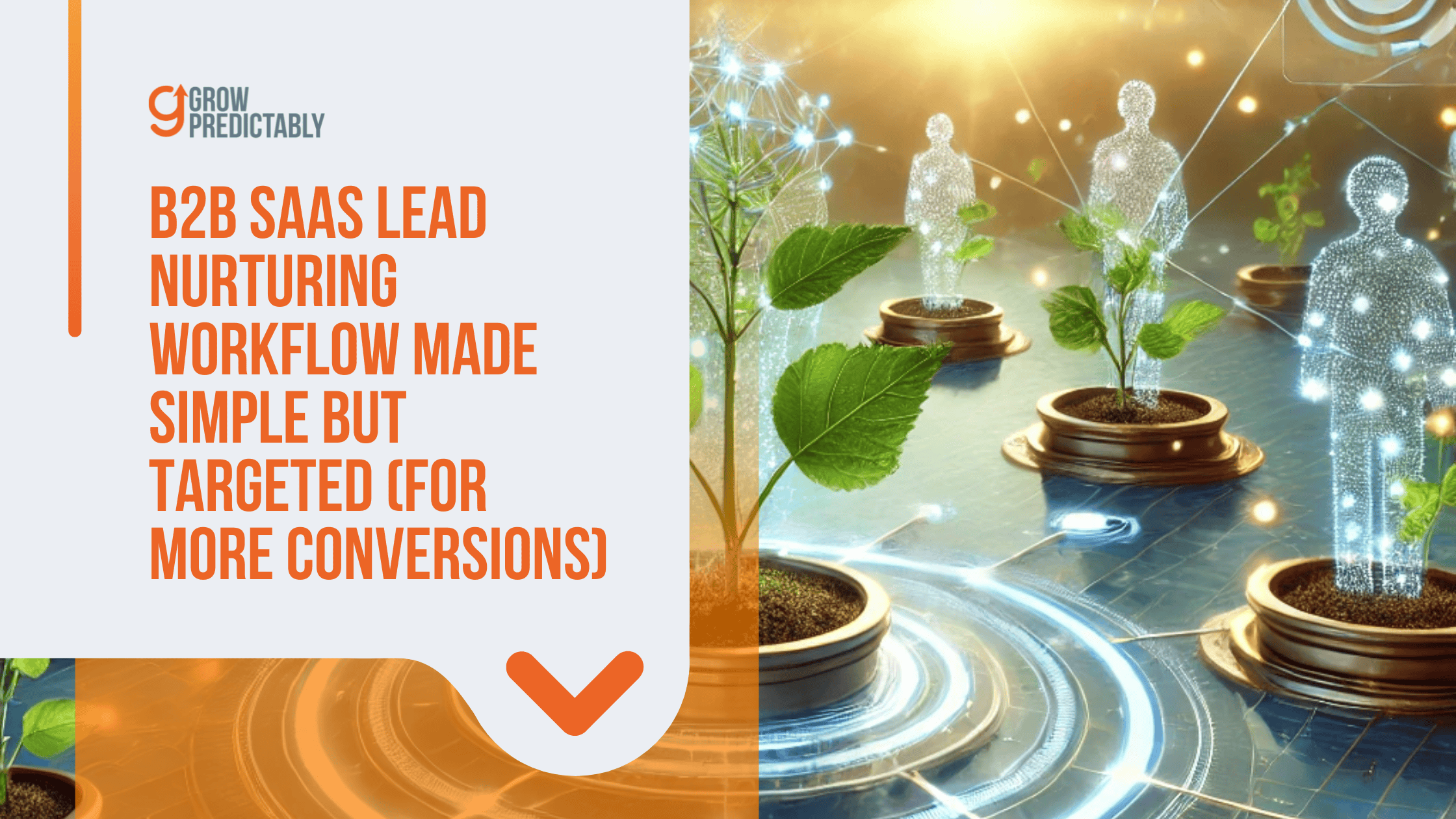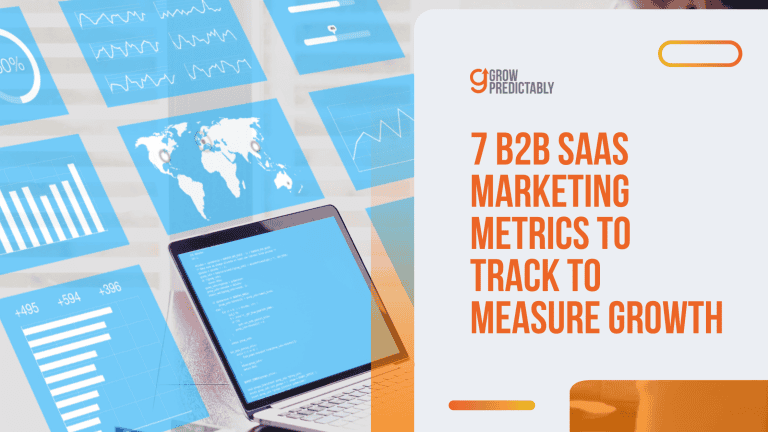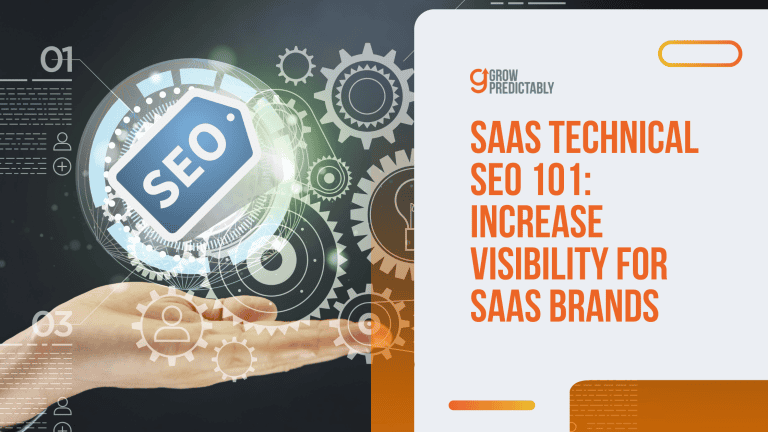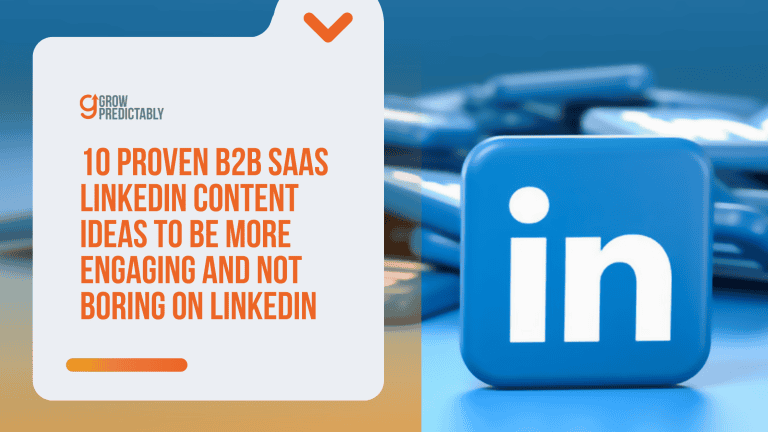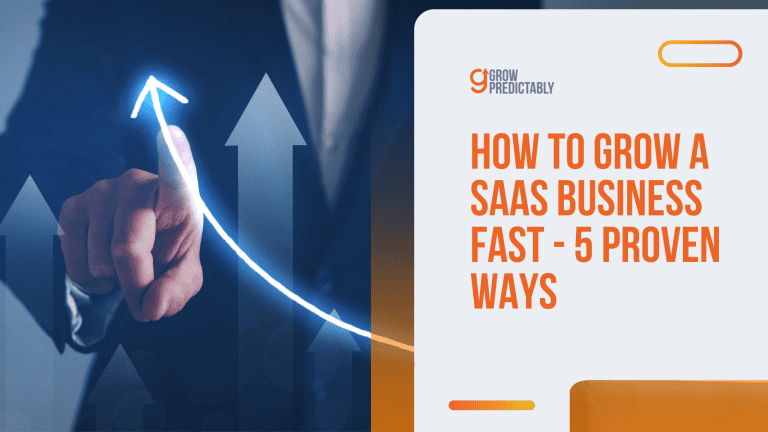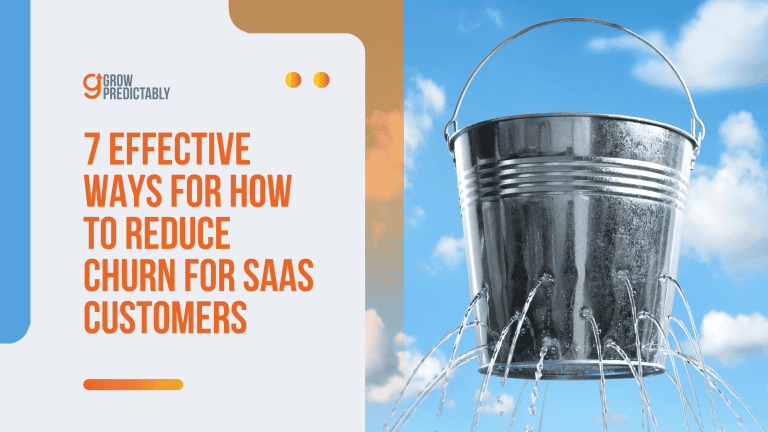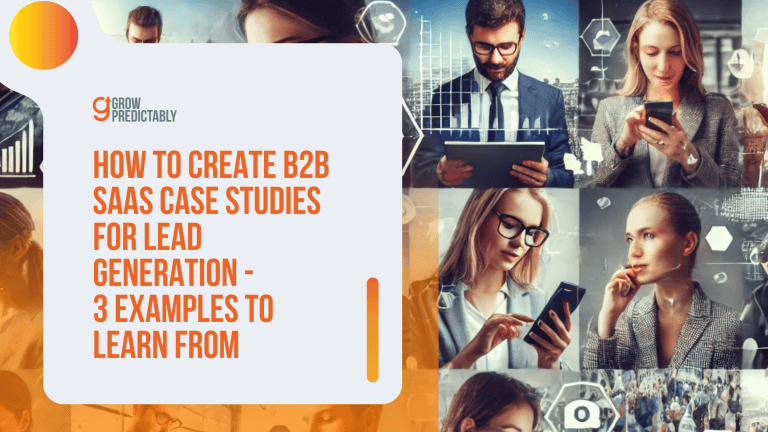B2B SaaS Lead Nurturing Workflow Made Simple But Targeted (For More Conversions)
Are your leads ghosting you halfway through the sales funnel?
You’re not alone—many B2B SaaS companies struggle with this, thinking that simply running email sequences will keep their leads warm.
But here’s the catch: Automation alone won’t cut it.
The obstacle?
Believing that once a lead enters your sales funnel, a few emails are all it takes to close the deal.
In reality, nurturing requires personalized workflows across multiple channels—emails, in-app messages, social media touchpoints, and more.
The benefit of getting it right?
A well-executed B2B SaaS lead nurturing workflow ensures consistent engagement, turning cold leads into loyal customers and preventing churn.
In this blog, we’ll show you how to overcome these roadblocks with workflows that work seamlessly across every stage of the customer journey.
Let’s dive in and build a lead nurturing system that converts.
- Dynamic marketing automation keeps leads engaged by adjusting messages based on user behavior, ensuring personalized and timely interactions.
- Audience segmentation enhances content marketing by delivering personalized, targeted content that boosts engagement and conversion rates.
- Omnichannel engagement through emails, social media, and in-app notifications enhances your ability to nurture leads across platforms.
- Targeting leads at each stage of the customer journey increases their likelihood of becoming paying customers.
- Re-engagement campaigns and customer success touchpoints are critical for preventing churn and maintaining user loyalty.
What is a B2B SaaS Lead Nurturing Workflow?
Lead nurturing is like building a relationship with someone who might be interested in what you offer.
For B2B SaaS companies, it’s all about guiding potential customers or nurturing leads through a journey until they’re ready to buy.
Why bother with a workflow for this?
Well, imagine trying to remember what each lead needs or where they are in their buying decision.
A workflow makes it easy to manage all that. It helps you send the right messages at the right time, nudging them closer to becoming a customer.
Now, let’s talk about personalization and automation.
Personalization means you tailor your messages to each lead. It’s like speaking directly to them about what matters most.
Automation helps you do this without manually sending each email or message.
It saves time and ensures no one slips through the cracks.
In short, a good lead nurturing process is key for turning potential customers into loyal ones.
It’s about making sure you’re there when they need you, with the right information, in a way that feels personal.
Who wouldn’t want that?
Why do you need to optimize your B2B SaaS Lead Nurturing Workflow to stay ahead?

Staying competitive in B2B SaaS means having a well-oiled lead nurturing workflow. Why?
Because it helps marketing and sales teams work smarter, not harder.
Optimized workflows make a real difference.
For starters, lead nurturing can boost sales opportunities by up to 20% compared to leads that aren’t nurtured. (Source) That’s a big deal for any sales team looking to close more deals.
And there’s more.
Companies that are great at nurturing leads see 50% more sales-ready leads at a 33% lower cost. (Source)
That means your marketing and sales teams can focus on leads that are more likely to convert, all while saving money on acquiring those leads.
It’s like having a GPS for your sales journey, directing you to the most promising opportunities without wasting time or resources.
Optimized lead nurturing workflows also make life easier for teams.
These workflows ensure that potential customers get the right information at the right time, making them more likely to engage and eventually buy.
So, if you’re in the SaaS game, having a solid lead nurturing strategy isn’t just nice to have—it’s essential to staying ahead of the competition.
To truly excel in lead nurturing, it’s crucial to understand the core components that power an effective workflow.
Let’s dive into the essential elements that transform a basic approach into a high-converting strategy.
The 3 Core Components of a High-Converting B2B SaaS Lead Nurturing Workflow

Lead nurturing workflows may look a little different from one B2B SaaS company to another, but there are core components that the most effective SaaS lead nurturing workflows have in common.
Components such as automation, segmentation, and omnichannel engagement.
But how important are they?
1. Dynamic Marketing Automation
Marketing automation is like having a digital assistant that keeps your potential customers interested as they move through the buying process.
It works by automatically sending messages and offers based on what each person does.
This keeps them engaged without you having to do it all manually.
The magic of dynamic automation is in its ability to adjust communication based on user actions, ensuring that every interaction feels timely and relevant.
By setting up triggers and workflows, you can keep users hooked at every stage of their journey, from first contact to purchase decision.
2. Audience Segmentation for Personalization
Think of segmentation as sorting your audience into groups based on:
- Demographics
- Firmographics (company size, industry, location)
- Behavioral data (website visits, email engagement, trial activity)
- Geographic location
- Engagement level (email open rates, click-throughs)
- etc.
These factors allow for precise segmentation, leading to personalized lead nurturing efforts that increase engagement, conversion rates, and customer satisfaction.
This makes it easier to send messages that really speak to them.
When you know what each group cares about, you can personalize your B2B lead nurturing campaigns and increase the effectiveness of your lead scoring.
When your lead scoring process becomes cleaner, it becomes easier to determine which leads are the most promising.
Instead of a one-size-fits-all lead nurturing strategy, segmentation allows you to tailor your messaging, making it more likely that your target audience will respond positively.
This improved personalization helps build stronger relationships because it shows your potential customers that you understand their needs and are ready to address them.
To segment B2B SaaS audiences using the Customer Avatar Canvas, I’d start by identifying key demographics like industry, company size, and job roles.
Next, I’d delve into psychographics, understanding their business challenges and goals.
By mapping out their pain points and behavior patterns, I can tailor messaging and solutions to each segment’s specific needs.
This approach ensures personalized marketing efforts, enhancing engagement and conversion rates by addressing what truly matters to each segment within the B2B landscape.
3. Omnichannel Engagement
Omnichannel engagement means reaching out to your leads through multiple channels, like emails, in-app notifications, and social media. Why is this important?
Because your potential customers are everywhere.
By combining these touchpoints, you can connect with them wherever they are most comfortable.
This approach ensures that your messages are seen and heard, no matter where your target audience spends their time online.
By meeting leads across different platforms, you increase the chances of nurturing them effectively and guiding them toward becoming loyal customers.
Common examples of channels you can utilize include:
- Email Campaigns – Automate personalized drip emails to nurture leads consistently.
- Push Notifications – Deliver reminders or updates directly to users’ devices, driving timely actions like completing sign-ups.
- Chatbots – Provide real-time assistance on your website or app, offering instant support and product recommendations.
- SMS Marketing – Send alerts and offers to keep leads engaged, particularly for time-sensitive promotions.
- Social Media – Maintain visibility by engaging through posts, DMs, and retargeted ads on platforms like LinkedIn or Facebook.
- In-App Messaging – Highlight key features directly within your product during onboarding to improve activation rates.
- Retargeting Ads – Re-engage prospects across platforms like Google and Facebook with personalized ads.
- Phone Calls/VoIP – Use direct calls or VoIP tools to follow up with high-value leads or convert trial users.
This multi-channel strategy ensures a seamless lead nurturing experience, engaging prospects wherever they are and keeping your product top-of-mind throughout their journey.
Now that we’ve explored the key components of an effective lead nurturing workflow, let’s delve into how these elements align with each stage of the Customer Value Journey for optimal results.
How to Target Leads at Every Stage of the Customer Journey
The goal of lead nurturing is to ensure your B2B leads are pushed all the way through to becoming paying customers, and the same goes with the Customer Value Journey.
To make your lead nurturing workflow more effective, we’re going to use the CVJ as a guide in order to nurture your leads to becoming your advocates.

Here are the different actionable tactics you can copy for every stage.
1. Awareness: Make the Prospect Aware of Your SaaS Product
Prospects at this stage need to discover your product as a solution to their pain points.
SaaS businesses should focus on introducing the brand through targeted content marketing that resonates with the prospect’s interests, using channels such as social media, organic search, or paid ads.
The goal of this lead nurturing strategy is to attract their attention without being too salesy.
Providing educational value sparks interest and positions the product as a credible option.
| What | Why | When | Where | How |
|---|---|---|---|---|
| Use blog posts | They help prospects find your product when searching for solutions to their problems | Early stage | Website | SEO-optimized posts to draw organic traffic |
| Run social ads | Create short, engaging content to introduce your product to a wider audience | Weekends | Facebook, LinkedIn | Use short ads highlighting common problems |
| Share explainer videos | Simple, informative videos can quickly convey your product’s benefits | Anytime | YouTube | Embed videos in blogs and product pages |
2. Engagement: Keep the Prospect Interested
Once aware, prospects need more information that reinforces their interest.
SaaS businesses should engage them through relevant content showcasing how the product solves specific challenges.
Engagement helps build trust, moving them from passive interest to active exploration.
| What | Why | When | Where | How |
|---|---|---|---|---|
| Launch email campaigns | Automated emails nurture interest with product benefits and use cases | Day 2-7 | Segment recipients based on behavior | |
| Publish case studies | Real-life success stories show how your product delivers results | Post-awareness | Website | Focus on relatable industry challenges |
| Run quizzes | A quiz can engage users by giving them tailored recommendations based on their needs | Post-visit | Website | Use retargeting ads to promote the quiz |
3. Subscription: Capture Their Contact Information
At this point, the goal is to convert engaged users into leads by capturing their contact information.
SaaS companies need to offer incentives like valuable gated content or free trials to encourage sign-ups.
Once subscribed, users enter the nurturing pipeline.
| What | Why | When | Where | How |
|---|---|---|---|---|
| Promote e-books or whitepapers | Provide deep insights in exchange for email addresses | Immediate | Blog | Offer gated, targeted content to capture emails |
| Run webinars | Invite prospects to sign up for educational events | Weekly | Zoom, Website | Provide actionable insights on common challenges |
| Offer trials | Let prospects experience the product’s value firsthand | Post-engagement | Add CTA buttons for quick signups |
4. Conversion: Encourage the First Purchase
Once users experience your SaaS product, the goal of your lead nurturing strategy is to convert them into paying customers.
You need to eliminate friction and provide an easy upgrade path from free trials or introductory offers to paid plans.
| What | Why | When | Where | How |
|---|---|---|---|---|
| Run demos | Help users understand how to get the most value from the product | Before trial ends | Zoom | Focus on essential product features |
| Send limited-time discount offers | Provide a sense of urgency to encourage quick decisions | Day 10-14 | Use countdown timers for urgency | |
| Launch outreach emails | Follow up with high-priority leads to address objections | Mid-trial | Personalize based on product use |
5. Excitement: Create Memorable First Impressions
New customers need to feel excited about their purchase.
SaaS businesses must deliver immediate value during onboarding and highlight key product features.
This ensures customers don’t just buy the product—they also love using it.
| What | Why | When | Where | How |
|---|---|---|---|---|
| Start onboarding early | Guide users step-by-step through key features | Immediately after signup | Email & In-App | Send step-by-step guides to help new users. |
| Use tooltips | Highlight essential features during the first few interactions | First product interaction | In-App | Highlight key features with in-app messages. |
| Send welcome emails | Celebrate the customer’s journey with personalized greetings | Within 24 hours | Include personalized greetings and quick tips. |
6. Ascension: Encourage Upgrades and Upselling
Once customers are comfortable, SaaS companies can introduce higher-tier plans or additional services to increase lifetime value.
The focus is on moving users up the value ladder.
| What | Why | When | Where | How |
|---|---|---|---|---|
| Announce new features | Showcase advanced tools that are available only in higher tiers | Monthly or quarterly | Email & Product Page | Promote advanced features with engaging visuals. |
| Offer usage reports | Send reports highlighting potential benefits of advanced features | After 1 month of use | Showcase how customers can benefit from upgrades. | |
| Provide discounts | Discounted offers make it easier for users to try higher tiers | During renewal periods | Email & In-App | Incentivize users with time-limited discounts. |
7. Advocacy: Turn Satisfied Customers into Advocates
Satisfied customers often become advocates who share their experiences with others.
SaaS businesses must encourage positive feedback and offer referral incentives to reward advocacy.
| What | Why | When | Where | How |
|---|---|---|---|---|
| Request reviews | Reviews give you UGC that can be utilized for marketing | After milestone achievements | Ask customers to share positive experiences. | |
| Launch referral campaigns | Leverages WoM marketing plus rewards your participating users | 3-6 months post-conversion | Email & In-App | Offer rewards for every referral. |
| Encourage social sharing | When done in the right social channels, is considered a powerful form of WoM marketing | After feature updates | Social Media | Provide branded hashtags for easy sharing. |
8. Promotion: Encourage Continuous Promotion
In the final stage, the goal is to keep customers actively promoting the product.
Continuous engagement ensures they stay connected and motivated to recommend your SaaS solution to others.
| What | Why | When | Where | How |
|---|---|---|---|---|
| Run loyalty programs | Offers benefits to long-term advocates | Ongoing | Website & Email | Offer exclusive rewards to long-term users. |
| Host social media contests | Encourage users to post about your product with hashtags | During product launches | Social Media | Reward users who post with your brand hashtag. |
| Offer beta access | Users see this as privilege and their experience can be used for marketing promotions | Before new releases | Email & In-App | Provide early access to loyal advocates. |
This lead nurturing workflow using CVJ ensures that every stage of the customer journey is optimized.
By providing value, building trust, and encouraging long-term engagement, SaaS businesses can efficiently nurture leads into loyal customers and advocates.
Once your leads have converted into customers, it’s crucial to keep them engaged to ensure long-term loyalty and satisfaction.
Let’s explore advanced tactics that can help you elevate your engagement strategy beyond the basics.
Advanced Tactics to Keep Your B2B SaaS Leads Engaged After Conversion

While the Customer Value Journey provides a fantastic foundation for nurturing marketing qualified leads or sales qualified leads, B2B SaaS businesses can take their marketing strategies a step further with advanced tactics.
These methods go beyond the basics, ensuring that customers not only stick around but also remain enthusiastic about the products they use.
In-App Personalization
In-app personalization is a powerful way to boost customer engagement in your B2B lead nurturing campaigns.
It involves tailoring the user experience based on individual behaviors and preferences.
Imagine opening an app and immediately being greeted with recommendations or features that match your past activities or interests.
This level of personalization makes customers feel valued and encourages them to explore more of what the app offers.
Real-world applications include personalized dashboards or custom notifications that remind users of features they haven’t tried yet, keeping them actively involved with the product.
Customer Success Touchpoints
Customer success touchpoints are proactive interactions that help customers achieve their goals while using the software.
These can range from onboarding tutorials to regular check-ins and feedback sessions.
By ensuring that customers are getting the most out of their purchases, SaaS companies can reduce churn and increase satisfaction.
For instance, a monthly check-in email that offers tips on using advanced features can boost engagement and highlight the value of the software.
Re-Engagement and Churn Prevention Campaigns
One of the essential strategies for keeping customers hooked is through re-engagement and churn prevention campaigns.
These tactics in your lead nurturing campaigns aim to bring inactive users back into the fold and prevent current customers from leaving.
A simple way to re-engage users is through personalized emails that remind them of the benefits they’re missing out on or offer incentives to return.
In real-world scenarios, companies use data analytics to identify users at risk of churning and target them with offers or new product features tailored to their needs.
Here’s an advanced email template for churn prevention:
Subject: Let’s Make the Most of Your [Product Name]
Hi [First Name],
We noticed that you haven’t logged into [Product Name] recently, and we’d hate to see you miss out on all the ways it can help [specific use case relevant to the business].
To make sure you’re getting everything you need, here are a few quick wins that other companies like [Customer Example] have used to boost their [key metric, e.g., productivity, ROI, or efficiency]:
- [Feature 1] – Automates [specific task], saving [X hours] each week.
- [Feature 2] – Helps you track [important business KPI] in real time.
- [Feature 3] – Integrates seamlessly with [tool or CRM], eliminating data silos.
We’re here to help if you need anything! I’d love to hop on a quick call to walk you through any features or answer any questions you might have. You can book a time that works for you [here (link to calendar)].
Also, we’ve created this 5-minute guide to help you get more out of [Product Name]—check it out [here (link to guide or resource)].
Let’s make sure [Product Name] delivers exactly what your team needs.
Best regards,
[Your Name]
Customer Success Manager
[Product Name]
Referral Marketing as a Retention Strategy
Referral marketing can also double as a retention strategy.
When customers refer new users, they’re more likely to remain engaged themselves.
This is because they have a vested interest in the success of the referral.
For example, offering rewards for both the referrer and the new customer can create a win-win situation.
It not only brings in new users but also reinforces the existing customer’s connection to the brand, making them less likely to churn.
By implementing these advanced tactics, SaaS companies can ensure that their customer engagement doesn’t stop at conversion.
Instead, it becomes an ongoing journey that keeps users happy and invested in the long run.
Use referral marketing to re-engage customers by offering dual incentives—a reward for both them and the person they refer.
For example, give discounts, credits, or exclusive access when they refer a colleague who signs up.
Highlight how the referral benefits their team or network, reinforcing the product’s value.
Send a personalized email or in-app notification explaining the offer and how easy it is to participate.
This approach creates a win-win dynamic, making the existing customer feel valued and motivating them to re-engage with the product while growing your user base.
Case Study: How Markentum Helped HarborChase in Nurturing Leads

In this case study, let’s briefly overview how HarborChase tackled lead nurturing.
HarborChase Senior Living Communities, managed by Harbor Retirement Associates (HRA), is a regional senior living development and management company.
HRA has collaborated with Markentum since 2018 to generate leads and streamline their digital marketing efforts.
The Problem
HarborChase faced challenges with lead quality and sales effectiveness.
The initial integration between HubSpot and Sherpa was insufficient, as the leads did not properly qualify.
This led to an inflow of low-level leads that cluttered the pipeline and hampered sales productivity.
Additionally, there was a lack of focus on the post-MQL (Marketing Qualified Leads) stage in the buyer’s journey, negatively affecting lead management and sales outcomes.
Approach to Address the Problem
Markentum developed a comprehensive strategy to enhance lead nurturing for HarborChase. The steps included:
- Updating the integration between HubSpot and Sherpa to capture sales stage data in HubSpot.
- Utilizing sales stage data for effective audience segmentation and targeted messaging corresponding to each stage in the sales funnel.
- Coordinating closely with the HarborChase sales team to tailor content and timing for each email sent to prospects.
- Implementing synchronized workflows to guide prospects through individualized journeys, ensuring each interaction was timely and relevant.
Results Achieved
The strategic improvements led to significant outcomes for HarborChase:
- 27% Increase in Open Rate: The enhanced lead nurturing resulted in better engagement, as reflected by the increase in email open rates.
- 11% Click-Through Rate: Targeted messaging and segmentation improved the click-through rate, indicating a higher level of prospect engagement.
- 37 Converted Prospects: Over a three-month period, the new approach converted 37 prospects into moved-in customers, showcasing the effectiveness of the refined strategy.
This case study highlights the critical role of customized lead nurturing in improving sales effectiveness and delivering substantial results in the senior living community sector.
FAQs
Key Takeaways
A well-optimized B2B SaaS lead nurturing workflow is essential for guiding potential customers through the sales funnel and preventing them from dropping off.
With personalized communication, automation, and multi-channel engagement, you can keep your marketing qualified leads or sales qualified leads warm, increase conversions, and build stronger customer relationships.
Implementing workflows with core elements like segmentation, dynamic automation, and omnichannel strategies ensures your leads receive the right message at the right time, improving both engagement and retention.
Now it’s time to put these insights into action—refine your lead nurturing workflow and watch your B2B SaaS business thrive.
Start building those workflows today to stay ahead of the competition and create long-lasting customer relationships.
Explore our other blogs on digital marketing, business strategies, and mindset to learn more ways to grow your SaaS business and sharpen your competitive edge!

